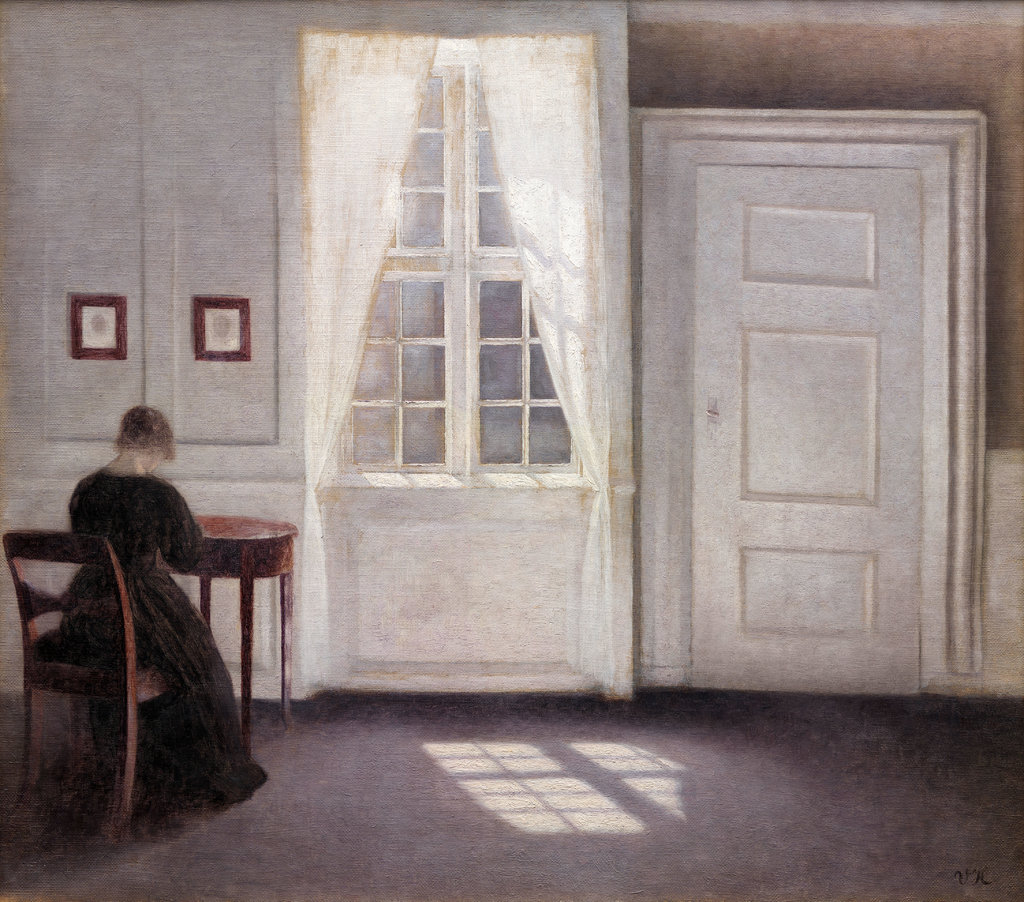
Journey Around My Room
I think from before lockdown, but certainly intensified by months of isolation, I find it difficult to separate my room from what happens in my head. The room is in the roof. It is unprepossessing. It contains the books that over the years have come to mean most to me in the world. They are to the left of me as I work, not that I would usually glance across, on a beautiful set of bookcases we inherited many years ago from Abi’s aunt. We are lucky to have the bookcases, and I am lucky that some of them are in the room. They are made of a dark wood I don’t recognise and they have those glass coverings that slide across. On top of the bookcases, which I hardly notice, I have a Jane Freilicher print of rooftops in New York, a Hammershøi of a woman working, a sketch of Rabelais by Matisse. I have no talent for interiors and so I don’t think these pictures tell me anything. From the desk underneath the eave I have a partial view. I look out across a street towards trees across a residential car park; silver birch and some that are unidentifiable to me along the outside of a field. One day I should check, work out what those trees I look at every day of my life are called. It tells me more, I think, than the paintings, that I haven’t taken the time already. I used to be in the room next door but then as we tend to we switched things around. This one I like because almost immediately I felt comfortable in the level of noise. I like that kind of noise that it’s possible to tune into, like the traffic I hear at this time in the morning drifting upwards from the street. Not so loud you can’t hear people as they pass but enough you couldn’t be certain what anybody has said. Nor the birds which, later in the evening, can be the only frequency a person has left. These are the kinds of sound. The room is a kind of record. I have a heater and a dictionary and a bibliography in progress laid out across the floor. Behind me, where I never look, is a desk piled with papers. I write, when I write, in the morning or not at all. And what I like about the Hammershøi is that the woman is at her desk, two paintings above where she is working, the way he attends to the light through the window as it is imprinted on the floor. You can’t tell what she is working on but something about her posture suggests she has been sitting there quite some time, captured in an interior of which she has long since been unaware. You can’t tell if the window gives out onto the street. Nor what the paintings above her desk picture. All you are supposed to understand, I think, is that the woman has found a place to work. The room is a chair and a desk and a willingness to be patient with syntax. And sometimes across the traffic the world talks.
David Herd is a poet and Professor of Modern Poetry at the University of Kent.